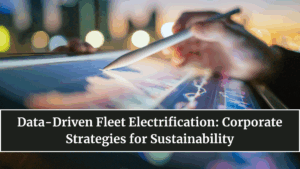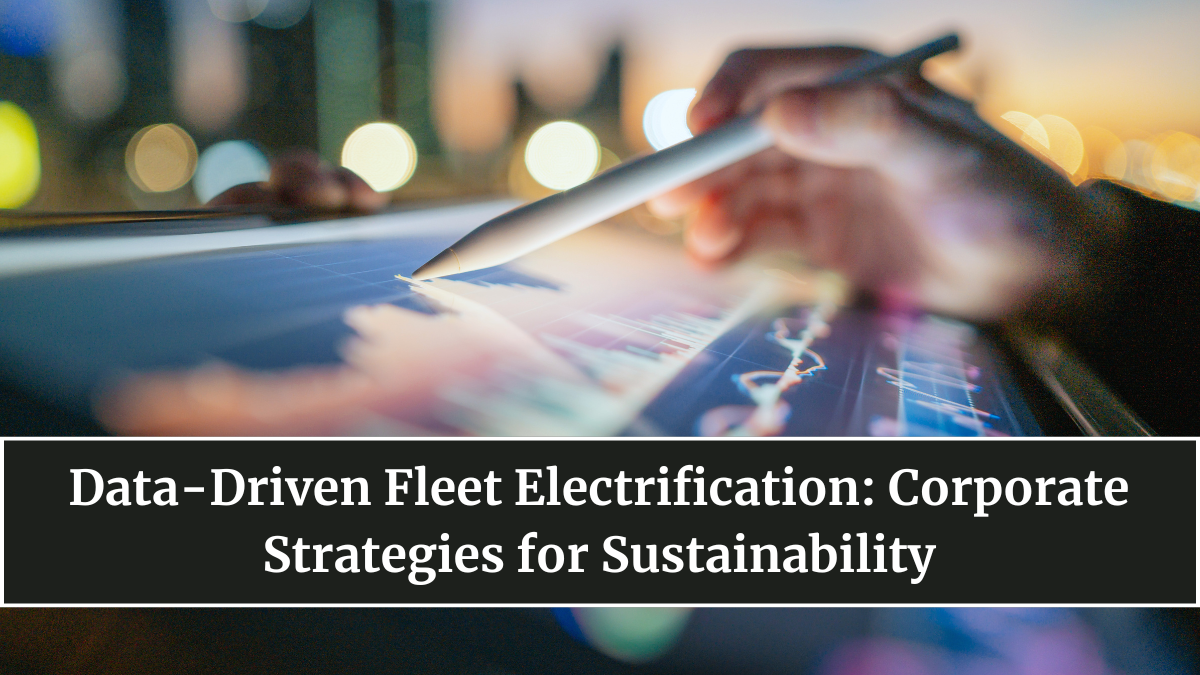Fleet management is entering a new era, powered by data, analytics, and sustainability goals. In 2025, fleet electrification has become a top corporate priority, as companies strive to cut emissions and operational costs while meeting global net-zero commitments. Using AI and predictive analytics, businesses are optimizing how their electric fleets operate — from route planning to charging infrastructure — ensuring maximum efficiency and minimal downtime.

The Rise of Corporate EV Fleets
Across industries, companies are transitioning from diesel and petrol vehicles to electric fleets. Logistics giants, e-commerce players, and government transport services are leading this transformation. Brands like Amazon, DHL, and Tata Motors have committed to electrifying thousands of delivery vans and service vehicles by 2025.
This shift is driven by multiple factors:
-
Corporate ESG targets emphasizing sustainability.
-
Government incentives for commercial EV adoption.
-
Lower total cost of ownership (TCO) compared to fossil-fuel vehicles.
-
Pressure from investors and consumers to go green.
As a result, electric fleets are no longer an environmental experiment — they’re a strategic business move.
How Data Analytics Is Powering Fleet Electrification
The biggest enabler of modern fleet electrification is data intelligence. Using real-time telematics, IoT sensors, and AI-based dashboards, companies can now monitor every aspect of their fleet operations.
Key data-driven insights include:
-
Energy consumption tracking for each vehicle and route.
-
Predictive maintenance alerts based on battery health and motor performance.
-
Route optimization to minimize charging stops and reduce energy waste.
-
Charging station utilization metrics for efficient scheduling.
With these insights, fleet managers can make data-backed decisions, ensuring that vehicles are used at their optimal performance levels while keeping costs low.
Smart Charging Infrastructure and Energy Management
A crucial part of fleet electrification 2025 is the integration of smart charging systems. These systems use AI to predict energy demand and manage grid loads effectively. For instance, companies can charge vehicles during off-peak hours or use renewable energy sources like solar microgrids at their depots.
Some advanced setups even employ vehicle-to-grid (V2G) technology, where parked fleet vehicles supply power back to the grid during high-demand periods. This not only saves costs but also strengthens the energy ecosystem.
Major corporate fleets are also investing in charging-as-a-service (CaaS) partnerships, outsourcing charging management to specialized providers who ensure uptime and infrastructure reliability.
Cost Savings and Operational Efficiency
Although the upfront investment in EV fleets and charging infrastructure is high, data analytics helps ensure long-term ROI through optimized energy use and predictive servicing. By using analytics to schedule maintenance and battery checks, companies can avoid breakdowns and maximize uptime.
Electric fleets have fewer mechanical parts, leading to lower servicing costs, and real-time data helps track wear and tear with precision. Combined with tax incentives and low electricity rates, total operational savings can reach 30–40% over the vehicle’s lifecycle.
Environmental and Policy Impact
Governments worldwide are supporting corporate fleet electrification through subsidies, carbon credit programs, and low-emission zone privileges. Companies that convert their fleets not only benefit financially but also improve their ESG (Environmental, Social, and Governance) ratings.
For example, India’s FAME-II policy, the EU’s Green Deal, and the US Clean Fleet Initiative are all accelerating the electrification of business transport. As sustainability becomes a competitive advantage, corporations are using fleet data analytics to measure and report emission reductions transparently.
The Future of Fleet Electrification
By 2025, data-driven fleet management is evolving into a fully automated ecosystem powered by AI, IoT, and predictive insights. Future fleets will autonomously schedule maintenance, self-optimize routes, and integrate with renewable grids — creating a new standard for intelligent mobility.
Companies that embrace data-driven electrification early will not only meet regulatory targets but also gain a significant operational edge in cost savings, efficiency, and brand reputation.
FAQs
What is fleet electrification?
Fleet electrification is the transition of business-owned vehicles from fossil fuels to electric power to reduce costs and emissions.
How does data help manage EV fleets?
Data enables real-time monitoring, predictive maintenance, and route optimization, improving efficiency and reducing downtime.
What are the main challenges of fleet electrification?
High upfront costs, limited charging infrastructure, and battery replacement expenses are major challenges — but data-driven management helps mitigate them.
Which companies are leading fleet electrification?
Amazon, DHL, FedEx, and Tata Motors are among global leaders in adopting electric fleets and smart mobility technologies.
What is the future of electric fleet management?
By 2030, fleets will use AI, V2G systems, and renewable energy integration to achieve fully autonomous, sustainable logistics operations.
